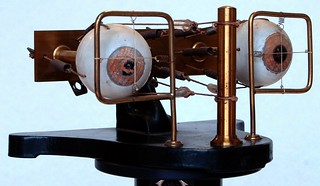- External URL
- Creation
-
Creator (Definite): Henning SchmidgenDate: 2004
- Current Holder(s)
-
Abstract
This paper addresses the visual culture of late-19th-century experimental physiology. Taking the case of Johann Nepomuk Czermak (1828–1873) as a key example, it argues that images played a crucial role in acquiring experimental physiological skills. Czermak, Emil Du Bois-Reymond (1818–1896) and other late-19th-century physiologists sought to present the achievements and perspective of their discipline by way of “immediate visual perception (unmittelbare Anschauung).” However, the images they produced and presented for this purpose were strongly mediated. By means of specifically designed instruments, such as the “cardioscope,” the “contraction telegraph,” and the “frog pistol,” and of specifically constructed rooms, so-called “spectatoriums,” physiologists trained and controlled the perception of their students before allowing them to conduct experiments on their own. Studying the material culture of physiological image production reveals that technological resources such as telegraphy, photography, and even railways contributed to making physiological facts anschaulich. At the same time, it shows that the more traditional image techniques of anatomy played an important role in physiological lecture halls, especially when it came to displaying the details of vivisection experiments to the public. Thus, the images of late 19th century physiology stood half-way between machines and organisms, between books and instruments.
- No links match your filters. Clear Filters







